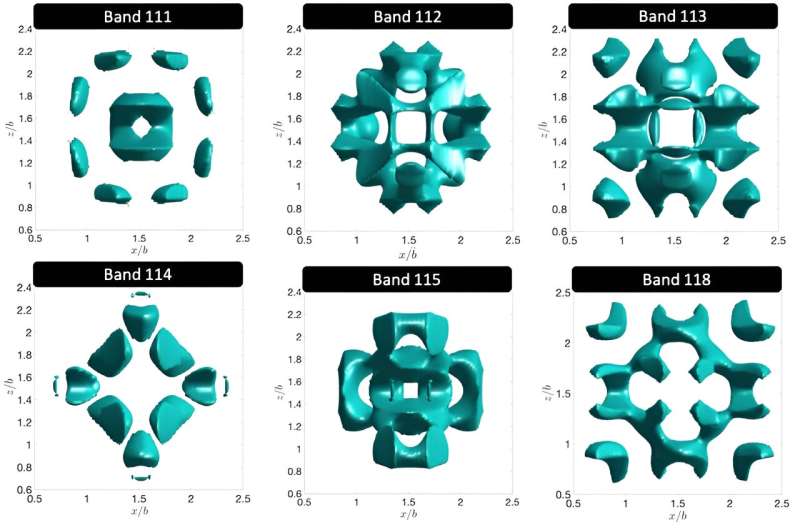This article has been reviewed according to Science X's editorial process and policies. Editors have highlighted the following attributes while ensuring the content's credibility:
fact-checked
peer-reviewed publication
trusted source
proofread
New shapes of photons open doors to advanced optical technologies

Researchers from the University of Twente in the Netherlands have gained important insights into photons, the elementary particles that make up light. They 'behave' in an amazingly greater variety than electrons surrounding atoms, while also being much easier to control.
These new insights have broad applications from smart LED lighting to new photonic bits of information controlled with quantum circuits, to sensitive nanosensors. Their results are published in Physical Review B.
In atoms, minuscule elementary particles called electrons occupy regions around the nucleus in shapes called orbitals. These orbitals give the probability of finding an electron in a particular region of space. Quantum mechanics determines the shape and energy of these orbitals. Similarly to electrons, researchers describe the region of space where a photon is most likely found with orbitals too.
'Whatever wild shape you design'
Researchers at the University of Twente studied these photonic orbitals and discovered with careful design of specific materials, they can create and control these orbitals with a great variety of shapes and symmetries. These results have potential applications in advanced optical technologies and quantum computing.
First author Kozon explains, "In textbook chemistry, the electrons always orbit around the tiny atomic core at the center of the orbital. So an electron orbital's shape cannot deviate much from a perfect sphere. With photons, the orbitals can have whatever wild shape you design by combining different optical materials in designed spatial arrangements."
Easier to design
The researchers conducted a computational study to understand how photons behave when they are confined in a specific 3D nanostructure consisting of tiny pores (a photonic crystal). These cavities are intentionally designed to have defects, creating a superstructure that isolates the photonic states from the surrounding environment.
Physicists Vos and Lagendijk say, "Given the rich toolbox in nanotechnology, it is much easier to design nifty nanostructures with novel photonic orbitals than it is to modify atoms to realize novel electronic orbitals and chemistry."
Advanced optical technologies
Photonic orbitals are important for developing advanced optical technologies, such as efficient lighting, quantum computing, and sensitive photonic sensors. The researchers also studied how these nanostructures enhance the local density of optical states, which is important for applications in cavity quantum electrodynamics.
They found that structures with smaller defects reveal greater enhancement than those with larger defects. This makes them more suitable for integrating quantum dots and creating networks of single photons.
More information: Marek Kozoň et al, Symmetries and wave functions of photons confined in three-dimensional photonic band gap superlattices, Physical Review B (2024). DOI: 10.1103/PhysRevB.109.235141
Journal information: Physical Review B
Provided by University of Twente




















